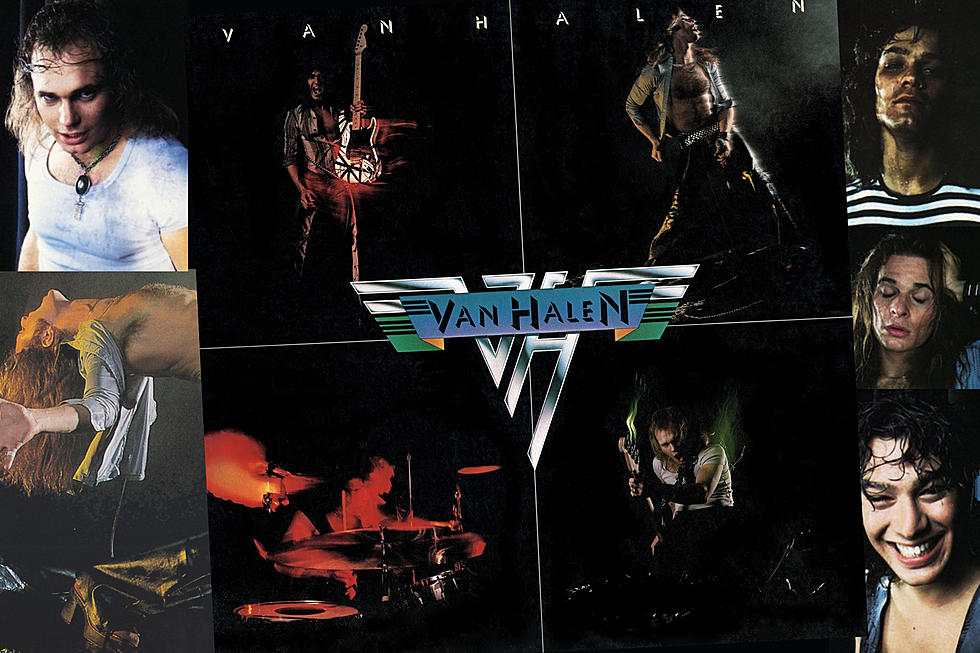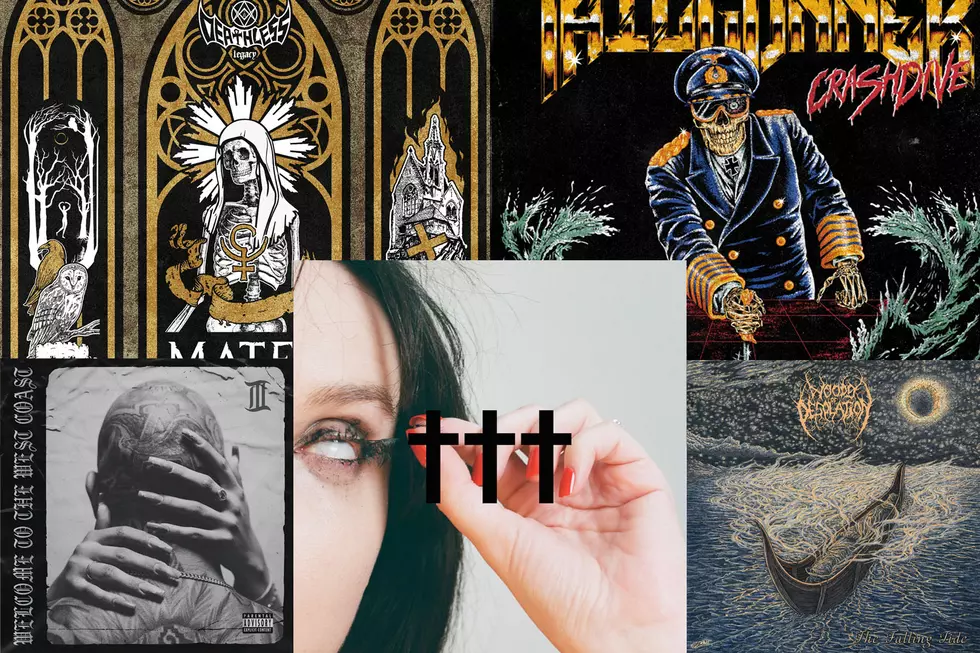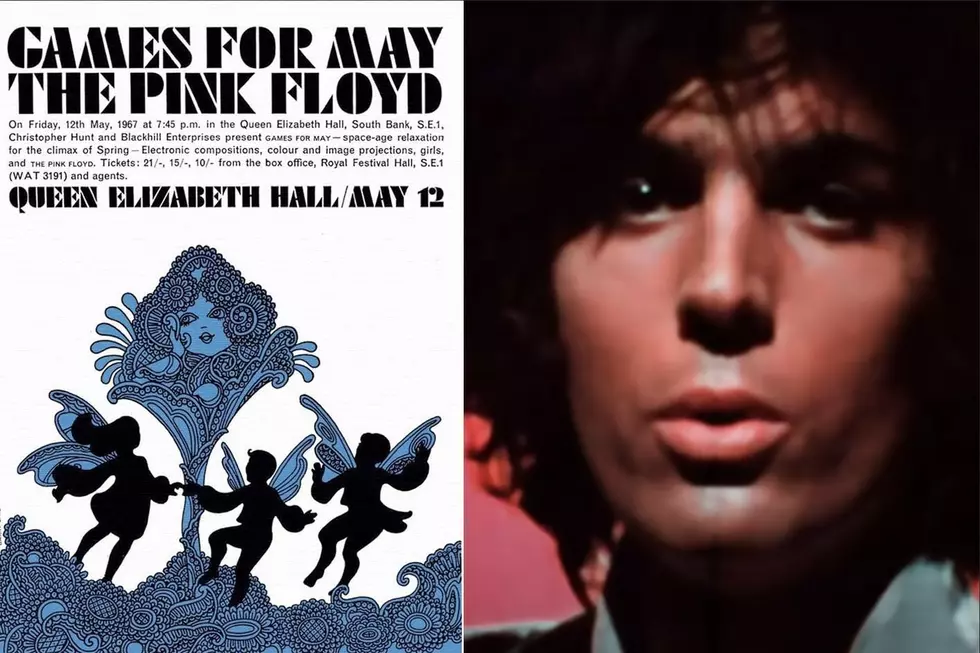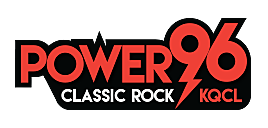
Van Halen’s Debut Album: A Track-By-Track Guide
Van Halen's self-titled 1978 debut album all but completely re-wrote the vocabulary of rock music. Here's a track-by-track look at how they made the record, and how its influence has been felt over the following decades.
"Runnin' With the Devil"
The first musical sound you hear on Van Halen's debut album isn't Eddie Van Halen's guitar. It's Michael Anthony's bass. And those insanely stratospheric chorus vocals you can't hit on karaoke night aren't coming from David Lee Roth, either.
It's understandable that Anthony and his rhythm section battery mate Alex Van Halen took a back seat in terms of public perception when compared to the group's two flashy and charismatic frontmen. But Anthony's musical and vocal contributions to the group were sizable and too often overlooked. In fact, in recent years they've been called into question by his former bandmates.
In a 2015 interview, Eddie Van Halen claimed, "every note Mike ever played, I had to show him how to play. Before we’d go on tour, he’d come over with a video camera and I’d have to show him how to play all the parts." As for Anthony's vocals, Van Halen says "Mike was just born with a very high voice. I have more soul as a singer than he does. And you know, people always talk about Mike’s voice on Van Halen songs, but that’s a blend of Mike’s voice and my voice. It’s not just him."
(Eight years earlier, when Eddie's son Wolfgang joined the band in Anthony's place, the group briefly went so far as to replace their former bass player's picture for online replicas of the artwork for their debut and other albums - although a swift public backlash made them quickly change them back.)
These claims drew a swift, sharp and profane rebuke from Sammy Hagar, who sang for Van Halen from 1985 to 1996. "Michael Anthony is a bad motherfucker. ... I was in that band for 11 years. There was never a video camera involved of Eddie showing him what to play," he seethed. "Eddie would tell him what to play once in a while and say, 'No, Mike. Don't play that many notes. Just stay on one note [demonstrates] so that I can fuck up and nobody will know it. It was that kind of shit."
Two years before that dust-up, Roth -- who doesn't agree with Hagar on very many things -- had similar high praise for Anthony's contributions to the group. "What we have at our fingertips is arguably one of the greatest high tenor voices ever -- that was in Michael Anthony," he explained. "In our tiny little corner of the universe, that voice is as identifiable as the high voice in Earth, Wind & Fire, as identifiable as the high voice in the Beach Boys."
Besides, who else could look so cool playing that famous intro with his teeth? – Matthew Wilkening
"Eruption"
In under two minutes, Eddie Van Halen became the new god of guitar. “Eruption” had been part of Van Halen’s setlists for a couple years, but if you lived outside of Southern California, you needed to wait until 1978 and Van Halen’s debut to experience the sheer insanity of it.
If “Eruption” had only been the first 20 seconds, with Alex and Michael thundering away on the drums and bass behind Ed, it would have been revolutionary. Sure, the structure is ripped from Cactus’ 1970 tune “Let Me Swim.” But those first squeals, screams, and tremolo bombs, redefined heavy guitar (maybe the closest thing to Ed’s intro that predates it would be Neal Schon’s playing on Journey’s 1977 cut “Hustler"). However, “Eruption” is a lot more than those first 20 seconds.
After Alex and Anthony move out of the way, Eddie begins his clinic of two-handed tapping. Yes, yes, Genesis guitarist Steve Hackett was tapping in 1972. But he wasn’t doing it like this. Somehow Eddie sounded like Jimi Hendrix, Bach and an alien invasion all at once. You can pull it apart, chart out the echo and harmonies, triplet tapping and flutter picking and dive bombs, but as a whole it remains unparalleled.
The craziest part? Van Halen almost left “Eruption” off the record.
Think about that for a moment: The most revolutionary minute-and-a-half of electric guitar work since, well, ever, might have missed Van Halen if it wasn’t for producer Ted Templeman’s insistence.
In 1996, Eddie recalled the story to Guitar World: “I showed up at the recording studio early one day and started to warm up because I had a gig on the weekend and I wanted to practice my solo guitar spot. Our producer, Ted Templeman, happened to walk by and he asked, ‘What's that? Let's put it on the tape!’ So I took one pass at it, and they put it on the record.”
Eddie has deviated slightly on the story -- he told Rolling Stone, “I was just rehearsing, and [engineer] Donn Landee happened to record it. It was never planned to be on the record. So the take on the record was a total freak thing. It was just an accident. He happened to be rolling tape.”
But the core of it never changes: Van Halen had no plans to put it on the record. Which would have been like leaving “Jessica” off of the Allman Brothers Band's Brothers and Sisters or the title track off of Funkadelic's Maggot Brain or, OK, there's no true comparison, because there is nothing that compares to "Eruption." – Jed Gottlieb
"You Really Got Me"
A few weeks before the release of Van Halen, the band was introduced to the world via their cover of the Kinks' "You Really Got Me." They had played the song regularly in the bars, and Ted Templeman lobbied for it to be their debut single, even though Eddie said he "would have maybe picked 'Jamie's Cryin,’ just because it was our own.”
It reached No. 36 on Billboard's Hot 100, and Kinks frontman Ray Davies would say it was his favorite cover of one of his songs. But Dave Davies, who created the original's groundbreaking guitar tone, didn't appreciate the new, flashier approach. "It was like, 'Hey man, look at me with my tight trousers! Here's our version of 'You Really Got Me!'" he said in 2010. – Dave Lifton
'Ain't Talkin' 'Bout Love'
A two-chord blast of hooky fun that started out as a goof on punk rock, "Ain't Talkin' 'Bout Love" was dashed off during a single day spent in the basement of David Lee Roth's folks' house. If Eddie Van Halen had anything to do it with, that just where the song would have stayed.
He once called it the "lamest" thing he'd ever written. "'Ain't Talkin' 'Bout Love' was actually a stupid thing to us – just two chords," Eddie told Guitar World. "It didn't end up sounding punk, but that was the intention."
He was reluctant to even show the song to the rest of Van Halen. Good thing he did: Though it never charted, "Ain't Talkin' 'Bout Love" has become a fan favorite and a concert staple – through multiple eras. More than that, it pointed to big changes in rock into the '80s.
In one sense, Van Halen shared some of the very punk aesthetics this tune sought to puncture. After all, Van Halen couldn't have been further removed from the fast-bloating prog and fiddle-driven disco of its time. They even let loose a few cathartic cries of "hey, hey, hey!" But Van Halen always had bigger aspirations.
"On Van Halen, I was a young punk, and everything revolved around the fastest kid of town – the gunslinger attitude," Eddie told Guitar World. "The thing is, I do so much more than just blow fucking solos. Actually, that's the least of what I do."
Van Halen in general, and this song in particular, was simply having too much fun to completely align with the angry safety-pinned crowd. They also weren't tossing these off in frenetic first-take run throughs. Their early songs were the result of a lengthy woodshedding period spent working as a local band. "Ain't Talkin' 'Bout Love" even featured a well-placed, and completely unexpected, electric sitar.
"Either [engineer] Donn [Landee] or [producer] Ted [Templeman] suggested I overdub a sitar underneath that melodic part I played for the solos," Eddie says in Greg Renoff's Van Halen Rising. It became one of Templeman's favorite moments as a producer.
Van Halen admitted that he had no idea what this new instrument, in fact, was. Still, he ended up liking the noises it made. "It could have been a Coral guitar, but it looked real cheap. It looks like a Danelelectro, with some kind of stuff muffling the strings back there," Eddie told Guitar World. "I never really knew it was an electric sitar, because it didn't sound like one. It just sounded like a buzzy-fretted guitar. The thing was real bizarre."
That gave "Ain't Talkin' 'Bout Love" a newfound musical depth and complexity, even as Roth shifted from cock-rock Casanova to something a little more dangerous. At one point, he's standing on the edge of some precipice – whether real or imagined, it's unclear – marveling over those who've been lost to love's high-risk invitations. Van Halen then comes roaring back in with that signature riff, a riff that could have kicked off the next decade all by itself.
Yes, boys in makeup, boys in spandex, everybody in animal prints, excessive umlauting, fingerless gloves and assless leather chaps, it arguably all started right here. Looking back, even the guys in the band could see it.
"Van Halen," Roth said in a 1978 interview, "is music for the 1980s!" – Nick DeRiso
"I'm the One"
Going into the end of side one, it had been nothing but bombast. From the car horn blare of “Runnin’ With the Devil” through the anthemic, fist-pump inducing “hey, hey, hey” chant of “Ain’t Talkin’ ‘bout Love,” there was no letting up. “I’m the One” looked to be no different, with Eddie delivering some quick fretwork to start things off.
Things change pretty dramatically in short order and it turns into a swift rump-shaker with a boogie beat. At the core of the song is Roth’s showmanship, all that he had been working on as a young lad singing and dancing for anyone who would watch. It’s his ultimate performance piece. When he, Eddie and Anthony come together for the main chorus harmony, it’s unlike anything else on the album.
But then there’s that breakdown, following a unique and spontaneous guitar solo, and suddenly the track formerly known as “Show Your Love” makes a sharp left turn into the ether, with nothing more than a “Bop bada, shoobe doo wah, bop bada, shoobe doo wah” vocal refrain keeping it afloat. It could’ve been part of a jingle for the local department store or cherrypicked from a barbershop quartet at the turn of the '00s. Instead, it became a finger-snapping shimmy that showcased another side of Van Halen; it wasn’t all chest-beating, big rock machismo – these guys had dexterous levels of musical ability and no influence would go unchecked.
The allure of the song isn’t lost on the players either; it’s one of the most-beloved live in their catalog, done through their entire club days and beyond, then revived at the behest of Gary Cherone during his short-lived tenure as singer number three. Fans of “I’m the One” come from all ends of the spectrum too; there’s the paint-by-numbers version by an ad hoc lineup fronted by Mark Slaughter and more strikingly a swaggering take on it from early-'90s one hit wonders 4 Non Blondes that came from the soundtrack to the heavily Van Halen-referencing 1994 film Airheads. – Michael Christopher
"Jamie's Cryin'"
Although it's one of the best-loved songs from Van Halen, "Jamie's Cryin'" didn't chart when released as Van Halen's third single in May 1978. But Eddie's riff and Alex's drums reached a massive audience a decade later when rapper Tone-Loc sampled it on his No. 2 hit from 1989, "Wild Thing."
Engineer Mario Caldato Jr. told Red Bull Music Academy that it was the brainchild of producer Matt Dike. "He was really inspired by the Rick Rubin rap/rock thing, and I guess he was trying to emulate that kind of vibe. He brought a West Coast vibe to it. Nobody would do something like that, but he just used the intro and the little guitar hits. He actually came up with the concept of the track “Wild Thing.” He’d seen Spike Lee’s movie She's Gotta Have It, and they say the “wild thing” in there, and he’s like, “That’s it right there, we got to do that.”
Reportedly, Van Halen's management charged Tone-Loc $5,000 for the right to use the sample, but they didn't get permission from the band. When the song became popular and the members of Van Halen heard it, they sued for a piece of it. It's believed they received $180,000 in an out-of-court settlement.
By coincidence, Van Halen covered the Troggs' garage-rock classic "Wild Thing" 15 times on their 1986 tour. – Dave Lifton
"Atomic Punk"
"Atomic Punk" is another come-on from Roth with plenty of guitar fireworks from Eddie but the use of the word "punk" in the title is interesting given their disdain for punk. "We’re not punk, we don’t dress weird. We play good music," Eddie said. "I’m not saying that the all the things I come up with are genius-brand riffs, but neither is punk. Punk’s like what I used to do in the garage." The band even played a date at the Whiskey a Go-Go in June 1977 as the Enemas, a punk band from Scotland, where they mocked punk and were quickly thrown off the stage.
Still, as they prepared their debut, Warner Bros. tried to lump them in with the nascent punk movement, proposing a different logo and using a washed-out photo for the cover. “They tried to make us look like the Clash," Eddie recalled. "We said, 'Fuck this shit!'” – Dave Lifton
"Feel Your Love Tonight"
Without “Feel Your Love Tonight,” there would never be Poison’s “Unskinny Bop,” “Lay It Down” by Ratt or a hundred other testosterone-fueled odes to young lust. Looking for a fleeting moment of partnership, one where “love” is meant in the most literal sense possible where it comes to clothes coming off is as basic a theme as it gets.
As Greg Renoff noted in his thoroughly researched book Van Halen Rising, Alex – who used the song to showcase his drum solos in the earliest days of the group’s live shows – once said of the track, “It's about what everybody feels on a Friday or Saturday night ... you jump in your car, you pick up your girlfriend, and you're gonna have a good time. Well, with Van Halen, every night’s a Saturday night.”
Encapsulating that in a three-and-a-half minute, catchy-as-hell song is a blueprint any upstart musical outfit would be smitten with trying to emulate. For Van Halen, it was just another day at the proverbial office, and a highly productive one at that. On any other planet, “Feel Your Love Tonight” would’ve been a smash hit, but the band’s debut was so heavily frontloaded with instant classics, it’s sometimes forgotten just how captivating the deep cuts can be. – Michael Christopher
"Little Dreamer"
Written long before they met producer Ted Templeman, "Little Dreamer" is the first concrete proof that Van Halen wasn't just another party-rock band. The darker, more substantive elements of 1979's Van Halen II and 1980's Women and Children First trace back to this soulful mid-tempo piece.
Still, "Little Dreamer" has a complicated legacy. It stands as one of the first power ballads. (Take a bow, Styx.) It also speaks to the astonishing influences that guided this band.
Eddie begins with a knife-sharp, Randy Rhoads-esque riff, then lays out some as Roth is given a nice showcase to sing – actually sing, rather than squealing and barking – about someone who's faced with the stark reality of lost promise.
Then something happens, 43 seconds in: A rush of layered background vocals led by Michael Anthony. They doesn't just power "Little Dreamer" along. They definitively connect Van Halen back to what Roth describes as his "old Motown learning."
Songs like the Four Tops' "Standing in the Shadows of Love," this slow-simmering cry of heartbreak, became a touchstone for him. "That's where the harmonies come from," Roth says in Van Halen Rising. "We had no keyboard; we had no pumping brass section. What are we going to do to add a little color to the chorus? We'll sing. Let's get some harmonies going here."
Eddie then checks in with an appropriately muted (for him, anyway) solo, offering lyrical Eric Clapton-isms and impressive Jimi Hendrix-inspired bends. (On the demo, Roth actually quips, "Are you experienced?")
The only question was how Van Halen might end this brooding moment. Unusually adept at finishing things on just the right note, they do not disappoint. Eddie fires off a few more gnarled outbursts on guitar as Anthony and Roth's backing sighs rise to one more improbable peak. Roth then settles into a sharply emotional restating of the title against Alex Van Halen's showering cymbal.
It's a perfectly understated conclusion to the most complex, utterly surprising thing on Van Halen I.
Within a few years, however, this sound was everywhere. Newer rivals from across the Los Angeles scene broadened their mainstream appeal with heart string-tugging power ballads, striking chart gold again and again by replicating an approach that still felt brand new when "Little Dreamer" first arrived.
Roth took it all in stride. "I don't know who coined the phrase imitation is the sincerest form of flattery," he told the Guardian in 2012. "Probably a litigating attorney coined it first. OK, if imitation is the sincerest form of flattery, then there are a whole lot of dogs out there. … At worst, I feel like I'm driving past a traffic accident and I'm relieved no one was killed." – Nick DeRiso
"Ice Cream Man"
As surprising as the inclusion of the rootsy "Ice Cream Man" might have seemed at first, it was actually old hat. David Lee Roth had been singing this horn-dog blues number long before he joined Van Halen, to the point that Eddie Van Halen considered "Ice Cream Man" to be part of Roth's pre-band solo repertoire.
Yet, in its own odd-ball way, it fit into the larger Van Halen aesthetic, Eddie said.
"No one in Van Halen really has one main thing that he likes," he told Guitar Player in 1978. "Dave, our singer, doesn't even have a stereo; he listens to the radio, which gives him a good variety. That's why we have things on the Van Halen album that are a change from the slam-bang loud stuff – like John Brim's 'Ice Cream Man.' We are into melodies and melodic songs. You can sing along with most of our tunes, even though many of them do have the peculiar guitar and the end-of-the-world drums."
"Ice Cream Man," at least to begin with, had none of that. Instead, it was just Dave, picking out a down-home figure and winkingly dedicating this song "to the ladies." Eventually, the rest of the guys come crashing in. But as their take upshifts from a dust-kicking shuffle to a choogling romp, Van Halen does something unusual: He adds a knotty slide, giving the song another element of Delta grit.
"Dave played the guitar, that little acoustic part," Eddie told Guitar World. "I just used some glass job for the slide. I had listened to Duane Allman a bit on 'Layla,' but slide is something that has never really interested me."
The single-entendre lyrics certainly fit in with this album's general mood of convivial debauchery: When Roth says his "flavors are guaranteed to satisfy," it clear he's not referring to any frozen treat. There really was an ice cream man, however, and that's how Roth first heard Brim's work.
He had a old friend, Tommy Lake, who drove an ice cream truck for extra cash, and Lake was the one who initially stumbled across "Ice Cream Man." Stanley Swantek, another old buddy, "borrowed the record and played it for Dave," Swantek's brother David says in Van Halen Rising. "Anyway, that is where the song came from."
"Ice Cream Man" emerged from the original demos Van Halen recorded during pre-label sessions, but early producer Gene Simmons was said to be lukewarm on the track. Undeterred, they put it on Van Halen I anyway – but only after Eddie added one of the most galvanizing solos of his youth.
It wasn't easy, though. Roth had always done this as an acoustic piece. The radical change in musical settings had admittedly left Van Halen at a loss. "Fuck, man, what kind of solo am I gonna do?" he muses in Van Halen Rising.
Of course, Eddie ultimately nailed it, adding a one-take effort that was recorded live and – as with "I'm the One" – left just as it arrived by producer Ted Templeman. Later, Van Halen returned to overdub a series of well-placed fills as the track reaches its climax.
It all combined to create a special, largely unrepeatable mix of impish gumption, vaudevillian poise and hooky presence. That became all the more obvious when Roth offered a horn-addled, utterly pointless solo cover version of "Ice Cream Man" on 2003's Diamond Dave. – Nick DeRiso
"On Fire"
Apologies in advance for ending this series with basically just a rant. But there are 11 songs on Van Halen's debut album - and one has been treated incredibly unfairly over the years. Nine of them (including "Eruption" as part of Eddie's extended solo) were played nightly on either the band's 2013 or 2015 tours - or in most cases, during both tours. But somehow the mighty "On Fire" hasn't been played live since the last show by the original lineup - which took place way back Sept. 2, 1984.
That's over 30 years. They've played "Fire in the Hole" 75 times since then, just as one horribly unfair point of reference. Even "Little Dreamer" was brought out for their first reunion tour with Roth, back in 2007-2008. So why is "On Fire" - which dates back to the band's club and first demo days, and was used to open shows on their 1978 tour - exiled from the setlist?
Could it be because it trades the pop sensibility of many of its album mates for one of the most straight-up metal approaches the band has ever taken? Or are the song's frequent and sustained vocal high notes just too much to handle after all these years? Like how Aerosmith skipped "You See Me Crying" when they played the rest of Toys in the Attic live on tour in 2009? If so, that's fair but is it OK if we're still sad about it?
What if we were actively plotting revenge against a co-worker who recently chose it as the song he'd cut from the album, allegedly because it "feels slightly unfinished" - would that also be alright? – Matthew Wilkening
See Rock’s Epic Fails: Van Halen Edition
More From KQCL Power 96










